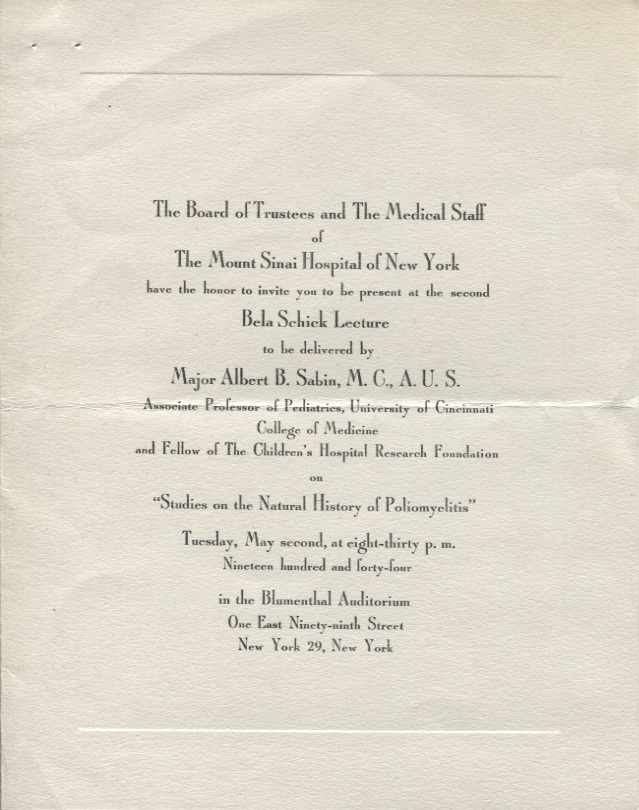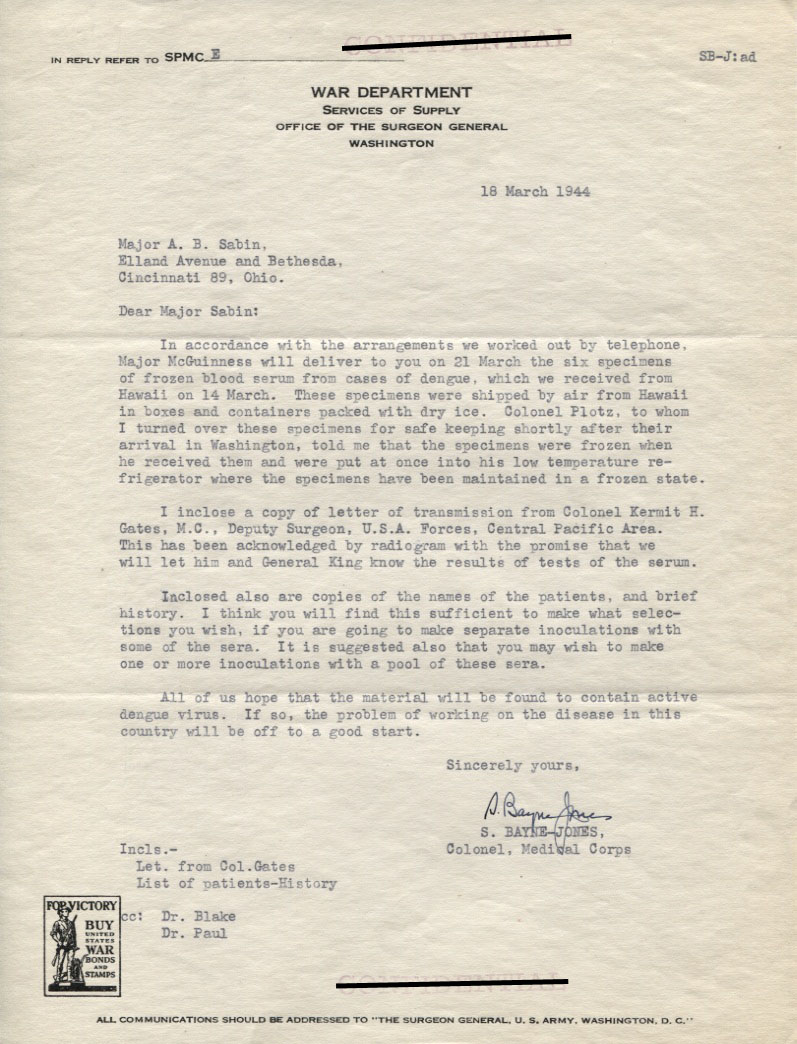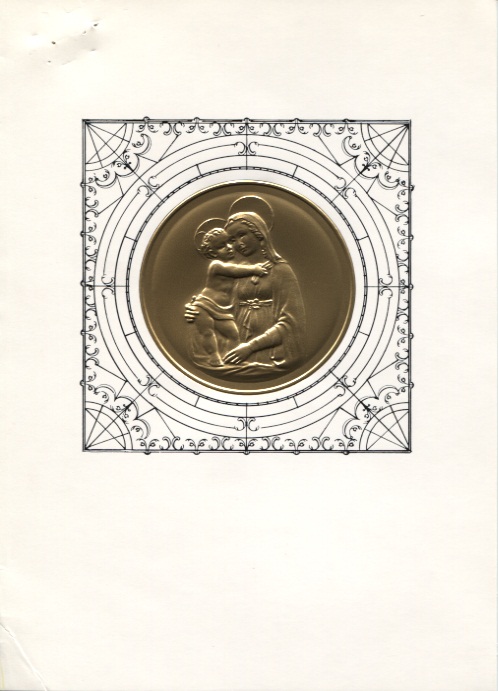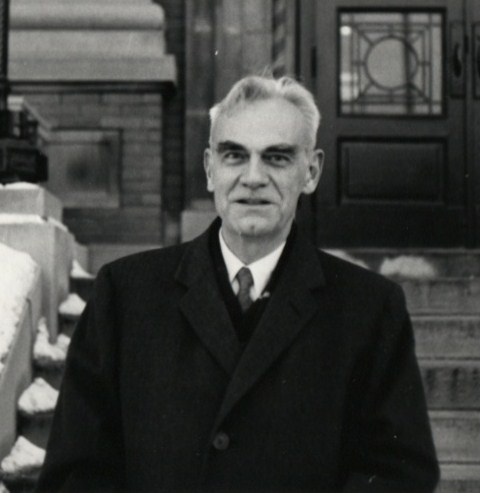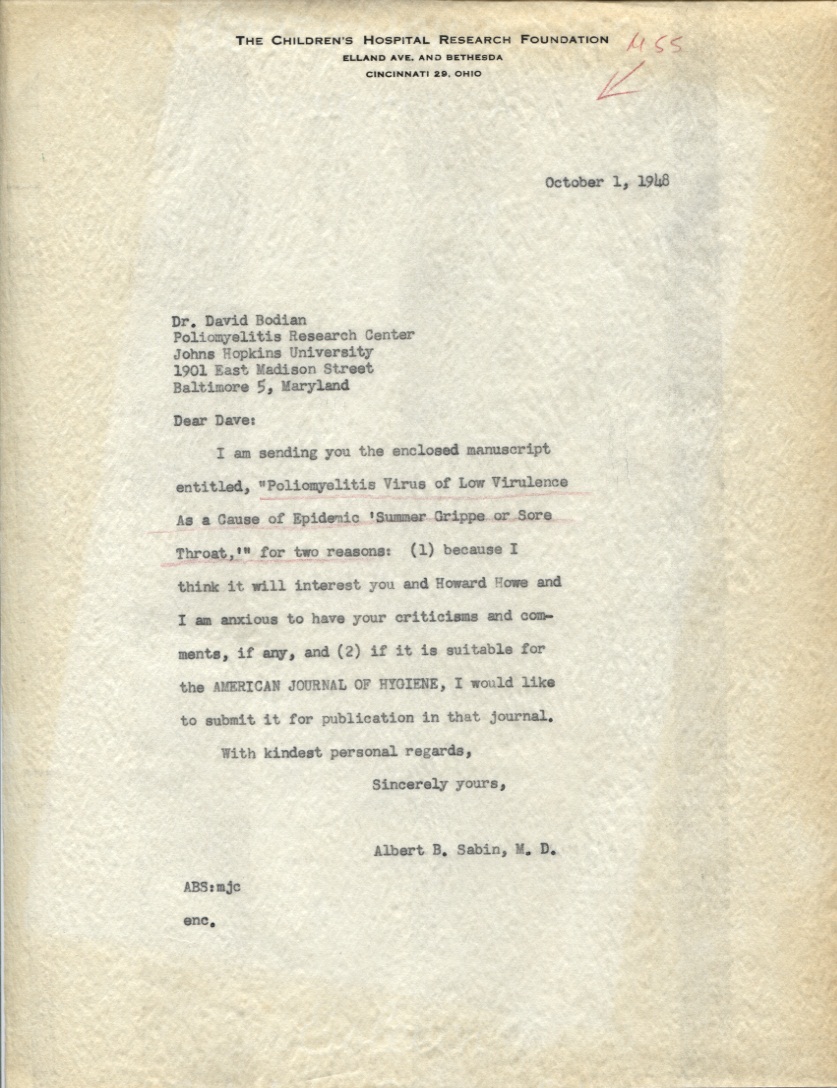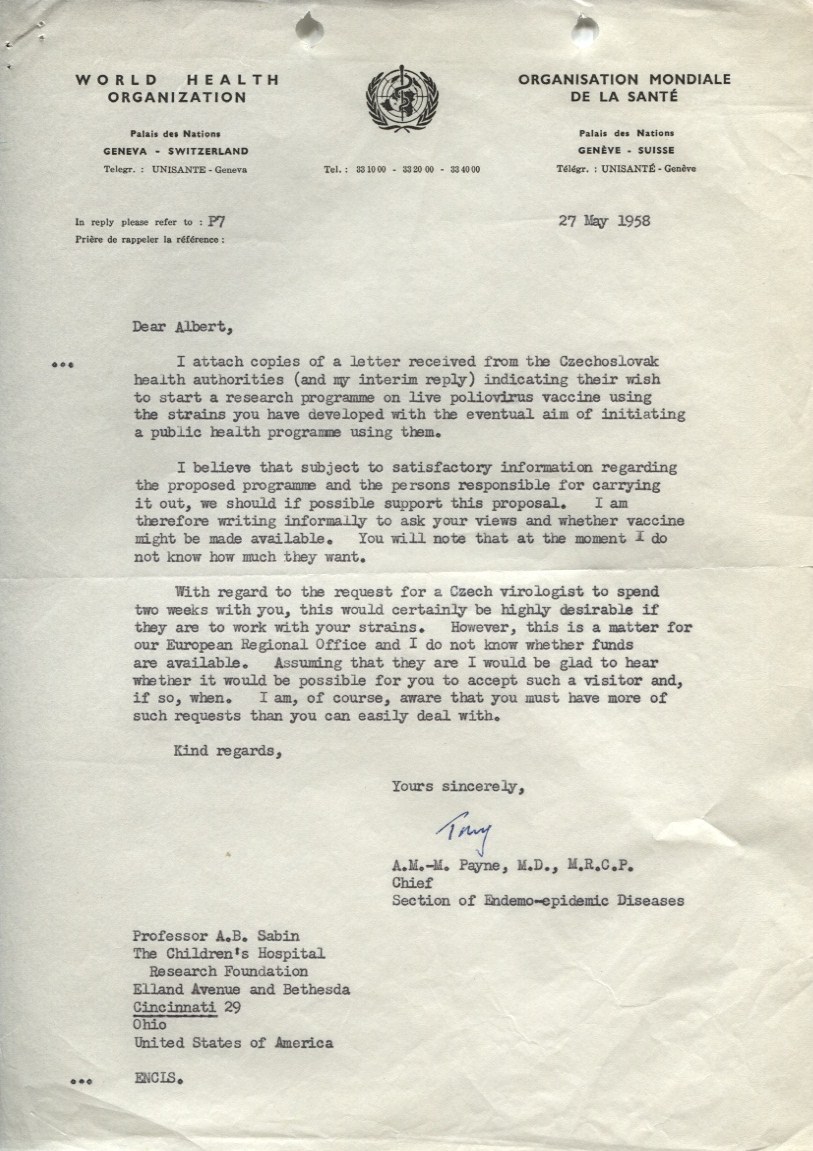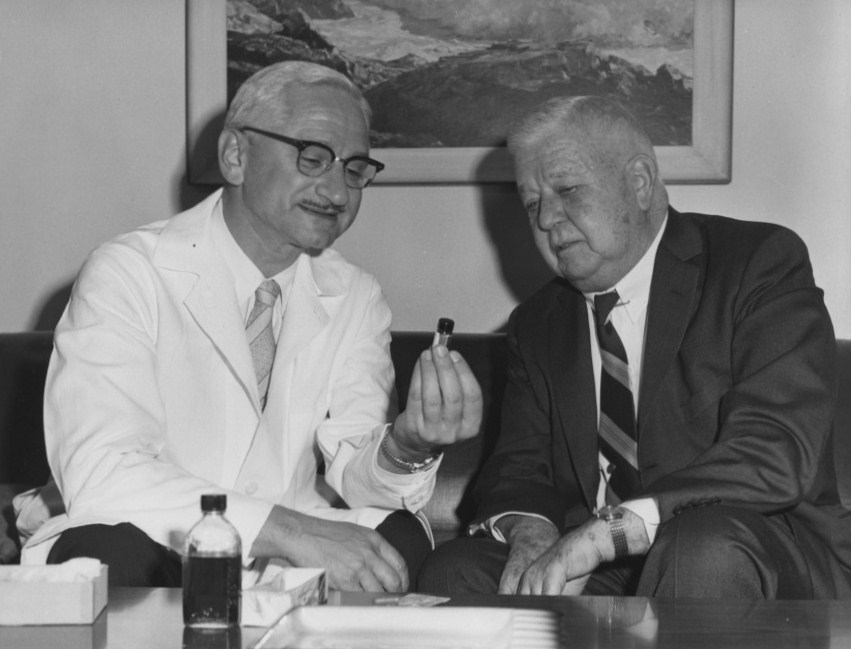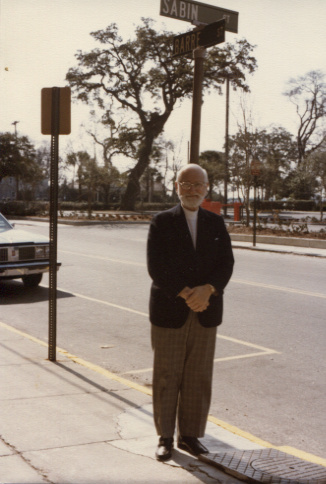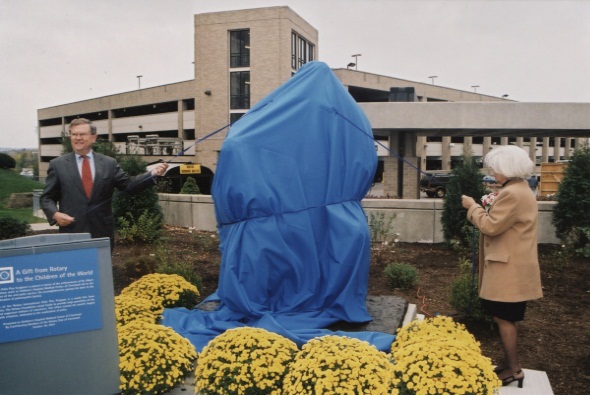
October 26, 2001 - Unveiling the Rotary Polio Plus sculpture. Mrs. Sabin can be seen in this photo on the right. (From the collection of Bruce Cook.)
[Sabin Archivist’s Note: This week features the first blog post from Megan Ryan, the Sabin Project student assistant. Megan is pursuing a Master of Community Planning from the College of Design, Architecture, Art and Planning here at the University of Cincinnati. She will be blogging on different Sabin-related topics as we work on the project. Please give Megan a warm welcome to the blogging world by reading her posts! -SB]
By Megan Ryan, Sabin Project Student Assistant
Last month, Stephanie and I went on a field trip to speak to past Rotary International Director, Bruce Cook. We sought insight into the involvement of Honorary Rotarian, Dr. Sabin, with Club 17. The Rotary Club of Cincinnati is given this title because it was the 17th Rotary Club formed in the United States in 1910 (the first was formed in Chicago in 1905). Mr. Cook told us many stories about Rotary, including when he met Dr. Sabin for the first time.
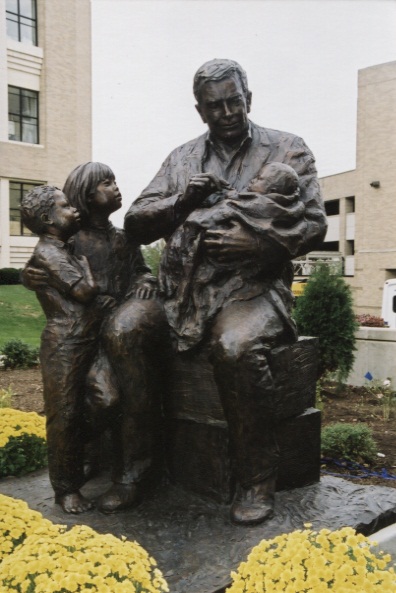
The Rotary Polio Plus sculpture (From the collection of Bruce Cook.)
When the Rotary Polio Plus Sculpture was discussed, it struck me how wonderful it is that there is a physical reminder of the immeasurable impact of Dr. Sabin’s polio vaccine and the work of Rotary International. The Polio Plus Program was launched by Rotary International in 1985, and is the largest private sector support of the Global Polio Eradication Initiative. As Mr. Cook said, “This statue symbolizes the 20-year commitment of countless Rotary members who are making their vision a reality and the world healthier for millions of children.”[1] Built in 2001, the seven foot tall, eight-hundred pound sculpture depicts a Rotarian vaccinating an infant while two children await their turns. The sculpture is located near the emergency department entrance and the clock tower at Cincinnati Children’s Hospital. Continue reading →


